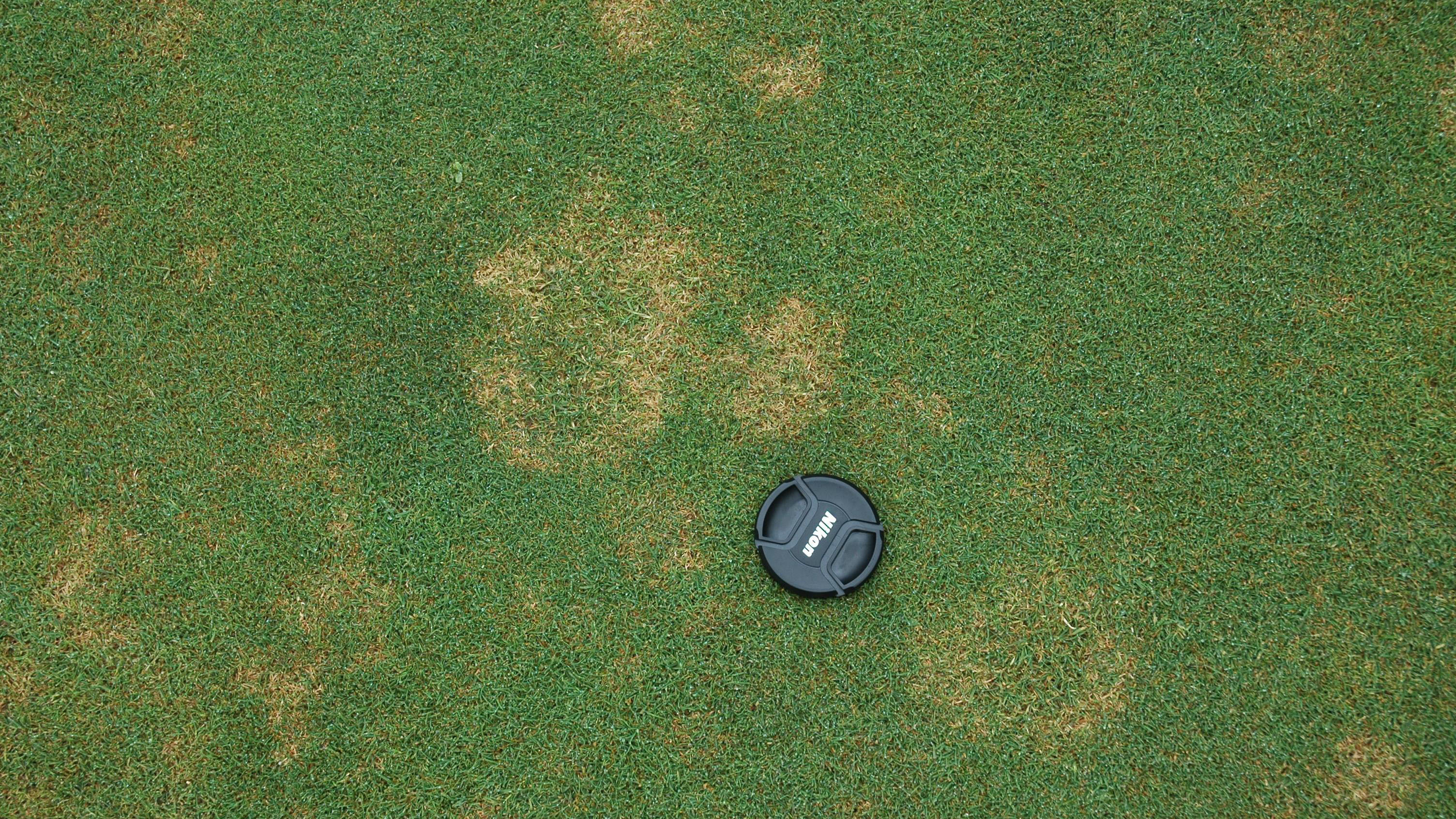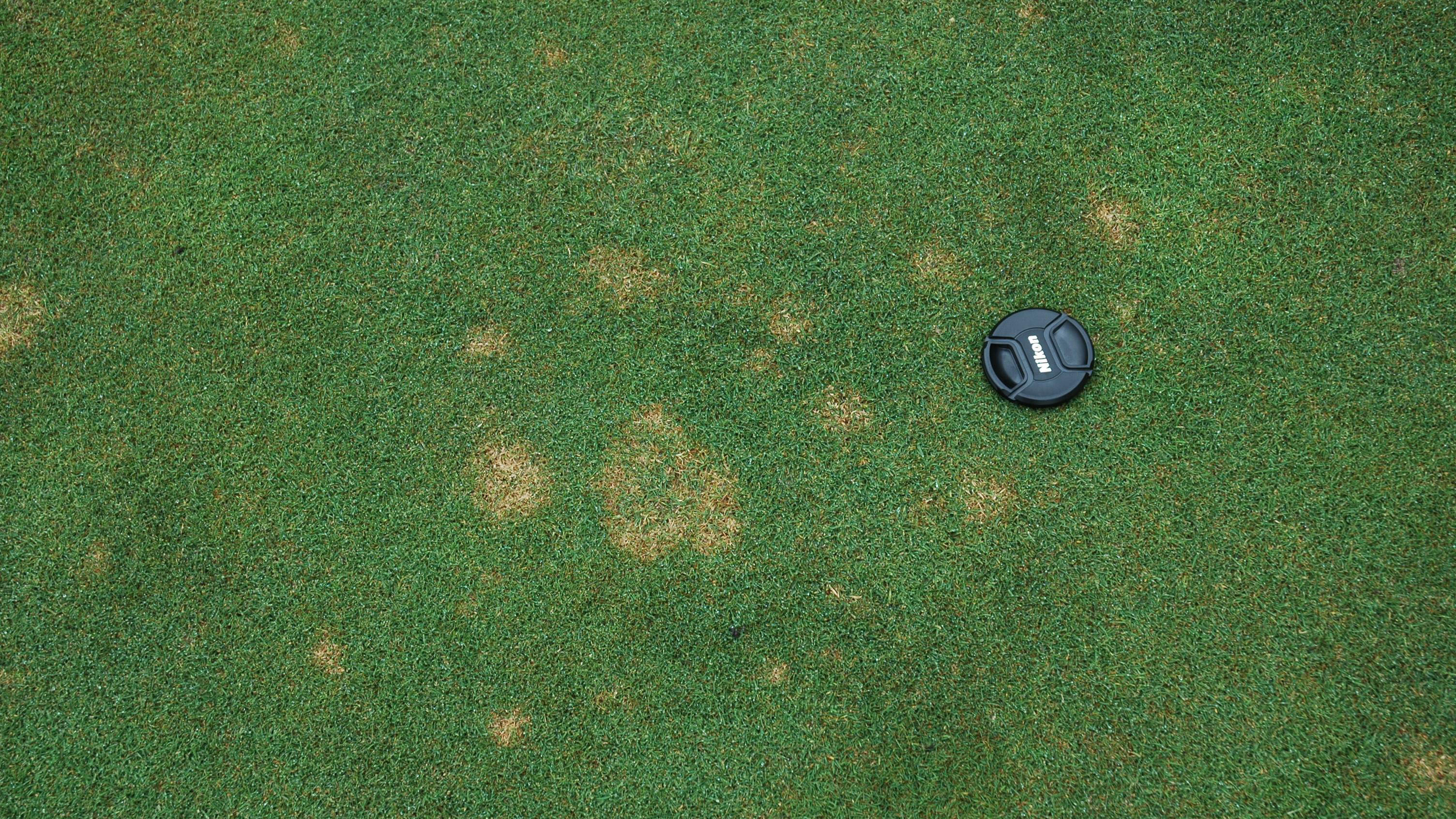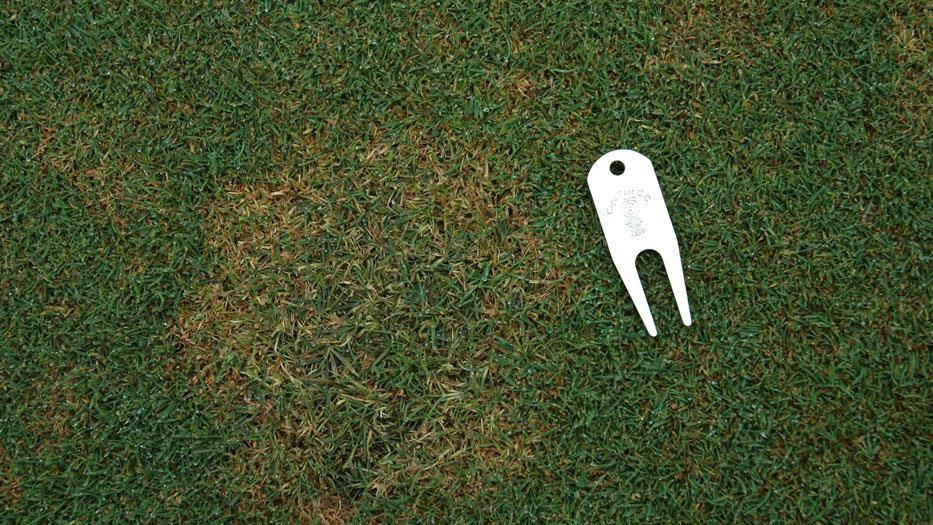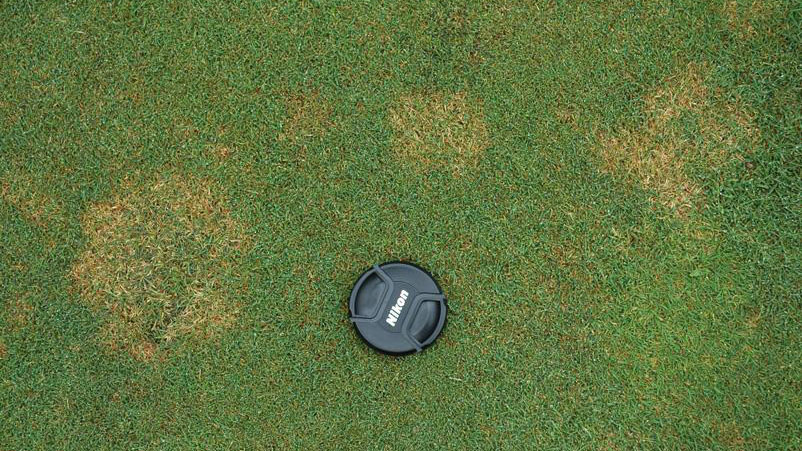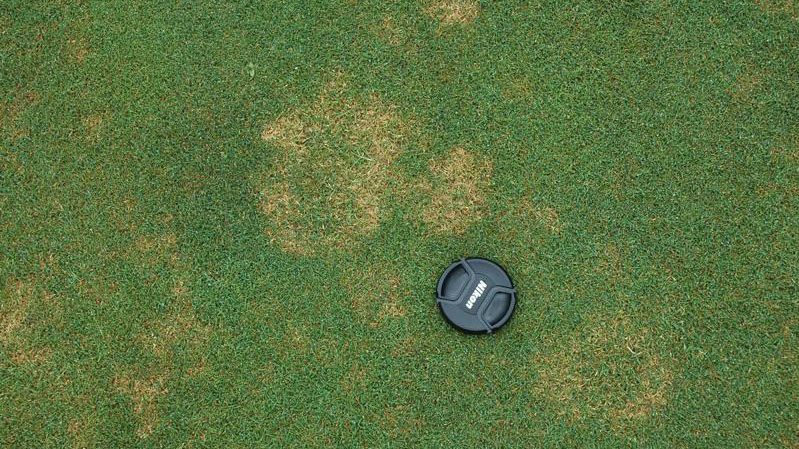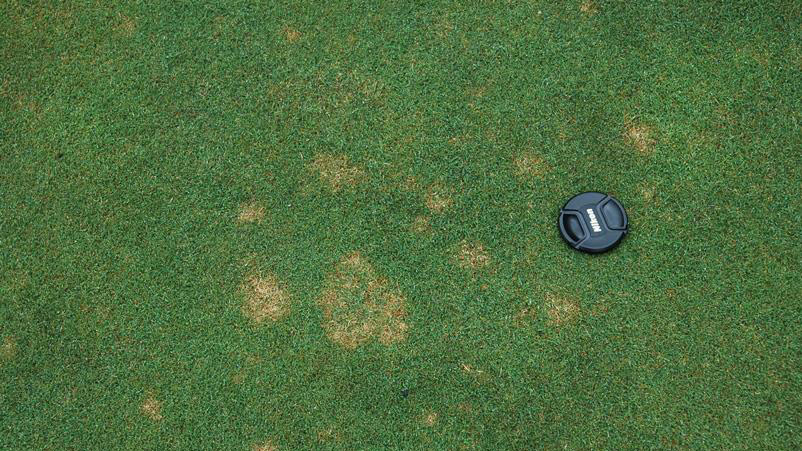Microdochium Patch in Turf
en Español / em Português
El inglés es el idioma de control de esta página. En la medida en que haya algún conflicto entre la traducción al inglés y la traducción, el inglés prevalece.
Al hacer clic en el enlace de traducción se activa un servicio de traducción gratuito para convertir la página al español. Al igual que con cualquier traducción por Internet, la conversión no es sensible al contexto y puede que no traduzca el texto en su significado original. NC State Extension no garantiza la exactitud del texto traducido. Por favor, tenga en cuenta que algunas aplicaciones y/o servicios pueden no funcionar como se espera cuando se traducen.
Português
Inglês é o idioma de controle desta página. Na medida que haja algum conflito entre o texto original em Inglês e a tradução, o Inglês prevalece.
Ao clicar no link de tradução, um serviço gratuito de tradução será ativado para converter a página para o Português. Como em qualquer tradução pela internet, a conversão não é sensivel ao contexto e pode não ocorrer a tradução para o significado orginal. O serviço de Extensão da Carolina do Norte (NC State Extension) não garante a exatidão do texto traduzido. Por favor, observe que algumas funções ou serviços podem não funcionar como esperado após a tradução.
English
English is the controlling language of this page. To the extent there is any conflict between the English text and the translation, English controls.
Clicking on the translation link activates a free translation service to convert the page to Spanish. As with any Internet translation, the conversion is not context-sensitive and may not translate the text to its original meaning. NC State Extension does not guarantee the accuracy of the translated text. Please note that some applications and/or services may not function as expected when translated.
Collapse ▲Symptoms
Pink snow mold develops during periods of snow cover, with symptoms of the disease becoming evident as the snow melts. The disease appears in roughly circular patches from 2 inches to 1 foot in diameter that are white or light tan in color. A ring of salmon or pink-colored growth is present on the outer edge of patches when the disease is actively developing. The infected leaves within the patches are usually collapsed and matted down upon themselves.
Development Factors
Disease activity is most severe when snow falls on unfrozen ground; however, activity can occur without snow cover during cool (less than 60°F) wet weather. Excessive foliar growth and thatch buildup are the most important factors encouraging development of pink snow mold and Microdochium patch. Restricted air movement, poor soil drainage, inadequate levels of potassium, and heavy traffic can also enhance the disease. The disease may also develop under tree leaves that remain on the turf for long periods during cold, wet weather.
Cultural Control
Do not apply nitrogen when cold weather is expected or before the first expected prolonged snow cover. Continue mowing in the fall until foliar growth stops completely. These steps will prevent a buildup of lush foliage that is highly prone to pink snow mold or Microdochium patch.
Improve surface drainage, control traffic patterns, reduce thatch accumulations, and aerify regularly in areas that have been severely affected by the disease in the past. Prune trees and remove unwanted vegetation that impedes air movement. Frequently remove leaves and other debris during autumn and winter from turf that is not covered with snow.
In regions where heavy snow is anticipated, take steps to minimize the duration of snow cover. Erect snow fences or plant landscape plants in strategic locations to prevent excess snow accumulation. Prevent traffic on snow-covered turf, as compacted snow will melt more slowly and increase damage from pink snow mold.
Chemical Control
Fungicides are effective for control of Microdochium patch (aka pink snow mold). In the case of pink snow mold, apply fungicides before snow cover to prevent disease development. Mapping and spot-treatment of areas where pink snow mold is most severe can significantly reduce fungicide expenditures. In regions where prolonged snow cover does not occur, apply fungicides when symptoms of Microdochium patch are first observed.
* Products marked with an asterisk are not labeled for home lawn use.
| Fungicide and Formulation1 | Amount of Formulation2 | Application Interval (Days)3 | Efficacy Rating | Resistance Risk | FRAC Code4 |
| azoxystrobin (Heritage) WG TL G |
0.2 to 0.4 0.7 2 3.5 4 lbs 7 lbs |
10 to 28 1 application 10 to 28 1 application 10 to 28 1 application |
++ |
Medium | 11 |
| azoxystrobin + acibenzolar-S-methyl (Heritage Action)* | 0.4 | refer to label | ++ | Medium | 11/P01 |
| azoxystrobin + chlorothalonil (Renown)* | 2.5 to 4.5 | 14 to 21 | ++ | Low | 11/M5 |
| azoxystrobin + difenoconazole (Briskway)* | 0.5 to 1.2 | 14 to 28 | ++ | Medium | 11/3 |
| azoxystrobin + propiconazole (Headway) ME G |
1.5 to 3 5.25 2 to 4 lbs 5 |
10 to 28 1 application 14 to 28 1 application |
++++ | Medium | 11/3 |
| azoxystrobin + tebuconazole (Strobe T)* | 0.75 to 1.5 2.4 |
14 to 21 1 application |
++++ | Medium | 11/3 |
|
benzovindiflupyr + difenoconazole (Ascernity)* |
1.0 | 14 | ? | Medium | 7/3 |
| chlorothalonil + acibenzolar-S-methyl (Daconil Action)* | 5.4 | 21 to 28 | ++ | Low | M5/P01 |
| chlorothalonil + fluoxastrobin (Fame C)* | 3 to 5.9 | 28 | ++ | Medium | M5/11 |
| chlorothalonil + iprodione + thiophanate-methyl + tebuconazole (Enclave)* | 7 to 8 | 28 | ++++ | Low | M5/2/1/3 |
| chlorothalonil + propiconazole (Concert)* | 8.5 | 14 to 28 | ++++ | Low | M5/3 |
| chlorothalonil + propiconazole + fludioxonil (Instrata)* | 5 to 11 | late fall | ++++ | Low | M5/3/12 |
| chlorothalonil + thiophanate-methyl (Spectro)* | 3.72 to 5.76 | 14 | +++ | Medium | M5/1 |
| fluazinam (Secure)* | 0.5 | late fall | +++ | Low | 29 |
| fluazinam + acibenzolar-S-methyl (Secure Action)* | 0.5 | late fall | +++ | Low | 29/P01 |
| fluazinam + tebuconazole (Traction)* | 1.3 | late fall | ++++ | Low | 29/3 |
| fludioxonil (Medallion) | 0.25 to 0.5 | 14 | +++ | Low | 12 |
| fluopyram + trifloxystrobin (Exteris Stressgard) | 4.135 to 12.6 | 10 to 28 | +++ | Medium | 7/11 |
| fluoxastrobin (Fame) SC G |
0.18 to 0.36 2.3 to 4.6 lbs |
14 to 28 14 to 28 |
+ | Medium | 11 |
| fluoxastrobin + tebuconazole (Fame T)* | 0.45 to 0.9 | 30 | ++++ | Medium | 11/3 |
| fluxapyroxad (Xzemplar) | 0.26 | 14 to 28 | ++ | Medium | 7 |
| flutolanil + thiophanate-methyl (SysStar) | 4 to 6.12 2 to 3 |
1 application 14 to 21 |
+++ | Medium | 7/1 |
| iprodione (26GT)* | 4 to 8 | 1 to 2 applications | +++ | Medium | 2 |
| iprodione + thiophanate-methyl (26/36)* | 2 to 4 | 14 to 21 | ++++ | Medium | 2/1 |
| iprodione + trifloxystrobin (Interface)* | 4 to 7 | 1 application | ++++ | Medium | 2/11 |
| isofetamid + tebuconazole (Tekken)* | 3 oz | 14 to 28 | ++++ | Medium | 7/3 |
| mancozeb (Fore)* (Dithane)* |
6 to 8 6 to 8 |
14 to 42 14 to 42 |
+ | Low | M3 |
| mefentrifluconazole + pyraclostrobin (Navicon)* | 0.7 to 0.85 | 14 to 28 | +++ | Medium | 3/11 |
| metconazole (Tourney) | 0.37 to 0.44 | late fall | +++ | Medium | 3 |
| mineral oil (Civitas) + proprietary pigment (Civitas Harmonizer)* | (8 to 32) + (1 to 4) | 7 to 21 | +++ | Low | -- |
| myclobutanil (Eagle) | 1.2 to 2.4 | prior to snow cover | ++ | Medium | 3 |
| PCNB WP G F |
3 to 8 80 to 160 12 to 16 |
28 to 42 prior to snowfall prior to snowfall |
++++ | Low | 14 |
| propiconazole (Banner MAXX) | 2 to 4 | fall to early spring | ++++ | Medium | 3 |
|
prothioconazole (Densicor)* |
0.196 | 14 to 21 | ++++ | Medium | 3 |
| pydiflumetofen (Posterity)* | 0.08 to 0.16 | 14 to 28 | ? | Medium | 7 |
|
pydiflumetofen + azoxystrobin + propiconazole (Posterity XT)* |
1.5 to 3 | 14 to 28 | ++++ | Medium | 7/11/3 |
| pyraclostrobin (Insignia) WG SC |
0.5 to 0.9 0.7 |
14 to 28 14 to 28 |
+++ | Medium | 11 |
| pyraclostrobin + boscalid (Honor)* | 0.55 to 1.1 | 14 to 28 | +++ | Medium | 11/7 |
| pyraclostrobin + fluxapyroxad (Lexicon Intrinsic) | 0.47 | 14 to 28 | +++ | Medium | 11/7 |
| pyraclostrobin + triticonazole (Pillar G) | 3 lbs | 28 | + | Medium | 11/3 |
| tebuconazole (Torque)* (Mirage)* |
0.6 to 1.1 1 to 2 |
prior to snowfall 10 to 28 |
+++ | Medium | 3 |
| thiophanate-methyl (3336) (3336 Plus) (3336 G) |
2 to 4 2 to 4 1.5 to 6 lbs |
14 14 to 28 14 |
+++ | Medium | 1 |
| trifloxystrobin (Compass) | 0.2 to 0.25 | fall to early spring | +++ | Medium | 11 |
| trifloxystrobin + triadimefon (Armada) (Tartan)* |
1.2 2 |
fall to early spring fall to early spring |
+++ | Medium | 11/3 |
| triticonazole (Trinity) (Triton) (Triton Flo) |
0.5 to 2 0.15 to 0.3 0.28 to 1.1 |
14 to 28 late fall 10 to 14 |
+++ | Medium | 3 |
| triticonazole + chlorothalonil (Reserve)* | 3.2 to 4.5 | 14 to 28 | +++ | Low | 3/M5 |
| 1 Other trade names with the same active ingredients are labeled for use on turfgrasses and can be used according to label directions. 2 Units are oz, fl oz, or lb depending on formulation. Apply fungicides in 2 to 5 gallons of water per 1,000 square feet according to label directions. Use lower rates for preventive and higher rates for curative applications. 3 Use shorter intervals when conditions are very favorable for disease. 4 Fungicide Resistance Action Committe code. Products with same code have the same mode of action and are in the same chemical class. * Products marked with an asterisk are not labeled for home lawn use. |
|||||
| Efficacy Rating ++++ = excellent control when conditions are highly favorable for disease development +++ = good control when disease pressure is high, excellent control when disease pressure is moderate ++ = good control when disease pressure is moderate, excellent control when disease pressure is low + = good control when disease pressure is low ? = not rated due to insufficient data |
|||||
| Resistance Risk Low = Rotate to different chemical class after 3-4 applications; tank mixing not necessary Medium = Rotate to different chemical class after 1-2 applications; tank-mixing with low or medium risk product recommended High = Rotate to different chemical class after EVERY application; tank-mix with low or medium risk product for EVERY application ? = not rated due to insufficient data |
|||||
Species Data
- HOST SPECIES
- bentgrass, bermudagrass, bluegrasses
- MONTHS WITH SYMPTOMS
- November to March
- STAND SYMPTOMS
- FOLIAR SYMPTOMS LOCATION / SHAPE
- blighting of entire leaves
- FOLIAR SYMPTOMS COLOR
- pink, white, tan
- ROOT / CROWN SYMPTOMS
- none
- FUNGAL SIGNS
- mycelium, jelly-like spore-masses




